The X Button
Strategy Gems
by Todd Ciolek,

There's a lot of talk about Super Robot Taisen games this week, so I should probably explain why I'm calling the series Super Robot Taisen and not “Super Robot Wars,” as it's known even in Japan. Well, it happens that Atlus, perhaps motivated by legal matters, went with the title Super Robot Taisen when releasing three games from the series. And those are the only three Super Robot Taisen games that have made it to North America so far. Bandai Visual apparently didn't care when they released the Super Robot Wars TV series over here under that very title, but this column's about video games first and foremost. I've been inconsistent in the past, and I need to set a precedent here. So Super Robot Taisen it is.
Of course, this is the cue for some North American company to snatch up the latest Super Robot Taisen game and release it here as The 2nd Super Robot Wars Original Generation. I know what motivates game publishers.
NEWS
SUPER ROBOT TAISEN RETURNS FOR ANOTHER ORIGINAL GENERATION
It's tough to be a Super Robot Taisen fan in North America. Sure, you can always import the games from Japan and revel in their assemblies of familiar anime robots, but it's not quite the same as enjoying it in English. You have to make do with the two Original Generation games that Atlus translated for the Game Boy Advance, plus the extended boob joke that is Super Robot Taisen OG Saga Endless Frontier. Wouldn't it be great if Banpresto made another Original Generation game? Surely Atlus would bring it out here, and then all the misfortunes of your life would be mended.
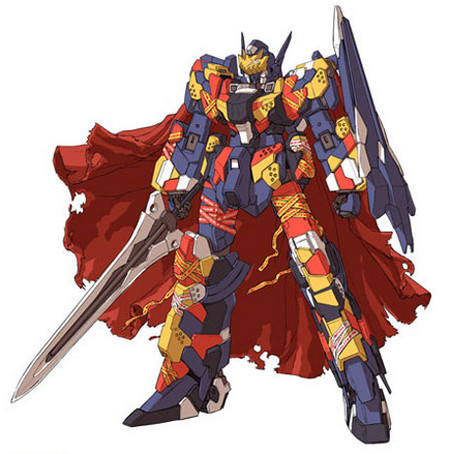
Exaggeration aside, some people are pleased that Banpresto announced The 2nd Super Robot Taisen Original Generation for the PlayStation 3. It's technically the third fourth proper game in the series, but it's based on the PlayStation 2's Original Generation, which compacted and retold the two Game Boy Advance games. Like previous Original Generation games, much of its cast was introduced other Super Robot Taisen titles: Hugo Medio, Aqua Centrum, and the Cerberus are from Super Robot Taisen MX; Joshua Radcliffe and the Aile Chevalier hail from Super Robot Taisen D; Ariel Org and her Flickerei Geist were loaned by the spin-off series Real Robot Regiment, and psychic mecha-jockey Ing and his Ashe robot actually debuted in a manga called Super Robot Taisen: Lost Children. Among the robots new to this game are the Jinrei and another version of the Gespenst Mk-II Custom.
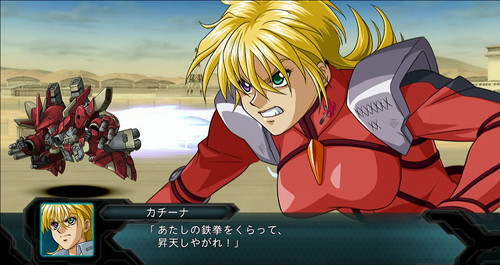
Several characters return from previous games, of course, and the first screens show Katina Tarask, Russel Bergman, Ibis Douglas, and Tsugumi Takakura. As far as mecha go, the Astelion AX, the Alteisen Riese, and other awesomely overdesigned robots from past titles will appear in The 2nd Super Robot Taisen Original Generation. The graphics also seem familiar ground, as the game still features 3-D backgrounds with superdeformed robot animation and 2-D close-ups of the pilots.
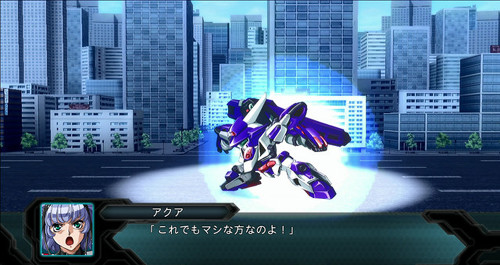
Of course, The 2nd Super Robot Taisen Original Generation lacks what some consider the entire point of Super Robot Taisen: a roster full of robots and pilots swiped directly from a dozen or so anime series. There'll be no scenes of the Gunbuster and Getter Robo teaming up against some poor Zaku from Mobile Suit Gundam. Then again, the lack of anime superstars is the only reason the game might make it to North America. No anime-robot lineup means no licensing headache, after all. Yet The 2nd Super Robot Taisen Original Generation is still a complex console game, and localizing a mecha strategy-RPG with numerous voices is a larger order than translating a Game Boy Advance game. If fans are denied once again, they can always import the Japanese release later this year. Hell, they can even splurge on a 41,790-yen ($420) special edition that includes the 26-episode Super Robot Taisen OG: The Inspector series on Blu-Ray.
THE 7TH DRAGON 2020 HAS NOTHING BUT FLOWERS
I wish I could just say “The 7th Dragon 2020 is a game where you fight dragons who covered Tokyo in flowers” and leave it at that, because explaining that premise only detracts from it. But I have to say more. The original The 7th Dragon was a dungeon-hack that turned heads on account of its fiercely tough gameplay and a staff that included Phantasy Star producer Rieko Kodama and Actraiser/Streets of Rage composer Yuzo Koshiro. They're back for the PSP-based sequel, The 7th Dragon 2020, and it looks to be the best game set in 2020 since that Neo Geo baseball thing.
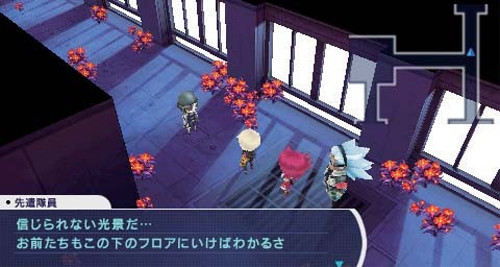
In their quest to defeat seven dragons and free Tokyo from noxious flowers, the player's party spends The 7th Dragon 2020 traipsing through graphically simple stages and fighting first-person battles. All around are creatures mutated by the Flowaro blooms, leaving plenty of opportunities for battle. Sega and developer Imageepoch take advantage of the game's futuristic stage when it comes to the jobs available to characters; instead of knights and mages, party members can be psychics, hackers, and other 2020 vocations. As someone who enjoyed far too much cyberpunk anime, I hope there's a cyborg police officer class. We'll find out in the months leading up to The 7th Dragon 2020's fall release date in Japan.
NIS AMERICA ANNOUNCES MORE RPGS…AND A BLEACH GAME
NIS America's upcoming release schedule has two familiar titles: Cladun X2 is the sequel to the intentionally basic PSP dungeon-crawler Cladun, released last year. Atelier Totori is another installment in the Atelier series, and it's also the second part of the Arland sub-saga on the PlayStation 3. And then there's a surprise in the form of Bleach: Soul Resurrección.
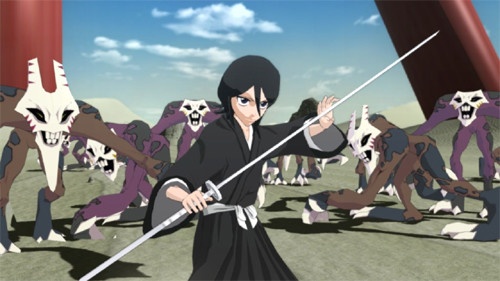
Known as Bleach: Soul Ignition in Japan, Soul Resurrección is a 3-D brawler with distinctly anime-like graphics and wide-open battlefields. It's also proof that there's still life in the Bleach manga and anime's neverending tale of Soul Reapers and bankai arrancar mod souls of the 47th division or whatever. To that end, the game offers 21 playable characters with elaborate, true-to-manga attacks. It's out in North America this August, a mere two months after it hits Japan.
IN BRIEF: PSP GAMES GET REMASTERED, PERSONA 2 GETS U.S. RELEASE, MEGA MAN LEGENDS 3 DEMO GETS DELAYED
Sony's new PSP Remaster label is a sensible idea: a line of PSP games made playable with hi-def visuals on the PlayStation 3. The first such release is Monster Hunter Portable 3rd HD Ver., though there's no date set. Sony hasn't announced any other PSP Remasters yet, and nothing's confirmed for North America.
It was generally assumed that Atlus would release the PSP revamp of Persona 2: Innocent Sin in North America. Sure, it was a somewhat controversial game back in 1998, with a possibly gay character and a boss fight against Hitler, but times have changed for the game industry. And so Atlus confirmed this week that Persona 2: Innocent Sin will arrive here in the fall. This marks the first time the game has shown up in North America, though Atlus released the first Persona and the second half of Persona 2, titled Eternal Punishment, on the U.S. PlayStation.
If there was one good reason to look forward to Nintendo's 3DS eShop, it was the chance to play Mega Man Legends 3 Prototype Version, a demo of the upcoming action-adventure game. Well, now there's one less reason to hop on the eShop when it launches on June 5. That's because the Protoype Version of Mega Man Legends 3 was delayed. There's no new date at this writing, but Capcom's still updating the game's development blog.
FEATURE: STATUS CHECK, PART 3
In this third and possibly final installment of The X Button's RPG status checks, we look at the growing field of strategy-RPGs. Previous editions covered popular RPGs and second-string series, and now we turn to the most prominent franchises in the field of tactical strategy. Or tactical RPGs. Or whatever it's called when little characters line up in a field or on a grid to hack away at each other.
Strategy-RPGs are an interesting little scene. For one thing, they're handy to have around when some pompous critic makes a show of claiming that traditional Japanese RPGs are all about linear level grinding and unintuitive thinking. That's where strategy-RPGs come in. They're all about planning, positioning, and occasional strokes of chance, so you can throw all of that right in that smug critic's face. And you'll have plenty to throw, as the last decade saw more and more strategy-RPGs released over here. We study the most prominent of those strategy-RPGs below, making exceptions for Sakura Wars and Disgeaea. They've had their turns already.
ADVANCE WARS Most of the English-speaking world got to know Advance Wars through the Game Boy Advance in the last decade, but the series stretches all the way back to the Famicom. New and old, the Wars games are cartoonish takes on full-blown battlefield carnage, as tanks and planes and ground soldiers are ordered around. Each has a special technique and a specific captain, though storyline mattered little in the earlier Wars games. The latter ones build up the plot just a shade more, and they also offer multiplayer features and the chance to edit together entirely new fields of combat. With its lack of overt drama, Advance Wars smoothly introduced many Game Boy Advance owners to strategy-RPGs back in 2001. It had all the approachable blandness of Nintendo's more popular franchises, and it forged a path not only for subsequent Wars titles, but other portable strategy-RPGs as well. Battalion Wars followed on the Gamecube and Wii, and then the series took a turn for the dark. In 2008, Advance Wars: Days of Ruin brought the play mechanics of the older, happier games into a post-apocalyptic realm of nuclear holocaust and science gone horrifically astray. Perhaps it was inevitable for the series. When you think about it, Advance Wars puts a cute face on a potentially grim idea. Status: It's been three years since Days of Ruin hit the DS, curiously skipping a Japanese release. Nintendo hasn't pushed Advance Wars since, though there's always hope for a 3DS treatment. Until then, Ghost Recon: Shadow Wars is an acceptable substitute.
|
FIRE EMBLEM The Fire Emblem series was demanded by many of America's RPG diehards in the mid-1990s. These fans were a vociferous little cult, and they often set themselves up for disappointment by requesting English releases of every Japanese RPG from Villgust to Dragon Quest VI. And the absence of translated Fire Emblem games stung worse than usual, just because Fire Emblem was a Nintendo series. Nintendo owned half of the gaming industry! Why couldn't Nintendo take a risk and bring one of the Fire Emblem titles to the West? But Nintendo didn't become a titan of the market by acceding to every fringe fan's request, and Fire Emblem stayed put in Japan. During the 1990s, Fire Emblem's only appearance in America was ADV Films' release of an awful Fire Emblem anime OVA. A few desperate souls bought it. Yet the times were changing. RPGs expanded from a niche into their own sector of the market, and Nintendo could not help but notice that. So when a new Fire Emblem came along for the Game Boy Advance in 2003, it was primped up for a North American release. It was a solid show of Fire Emblem staples. The story was a medieval-fantasy yarn, the battle system used an elaborate rock-paper-scissors flow, and characters died permanently if they fell in battle. Perhaps it wasn't so impressive to a generation that had already seen the political complexities and fairer play mechanics of Final Fantasy Tactics, but the important thing was that Nintendo had finally delivered a Fire Emblem game that the English-speaking world could enjoy. And Nintendo didn't stop there. Fire Emblem: The Sacred Stones followed for the GBA, and both Path of Radiance and Radiant Dawn were on the Wii in North America and Europe. The most recent Fire Emblem game to find its way here is Shadow Dragon, a retelling of an earlier title that, coincidentally, inspired the Fire Emblem anime. It's nice when things come full circle. Status: Nintendo may not ignore Fire Emblem any longer, but the latest game in the series remains in Japan. Fire Emblem: Heroes of Light and Shadow, a sequel to Shadow Dragon, arrived on the DS in 2010, and Nintendo shows no sign of localizing it. Support for the DS has dwindled with the arrival of the 3DS, after all. |
SUPER ROBOT TAISEN Super Robot Taisen is an enduring monument to Japan's affection for robots, not unlike that 23-foot-tall Gundam statue built in Tokyo. The Super Robot Taisen franchise may not be so grand a sight for tourists, but it's brought together all sorts of anime icons ever since its debut on the Game Boy 20 years ago. Proof that “professional fan fiction” is not necessarily an oxymoron, each Super Robot Taisen title gathers in pilots and mecha from popular anime titles old and new, sticking them in superficial strategic battles rife with in-jokes and frequently ridiculous robotic warfare. It's a series where The Big O can trade punches with the Garland robo-bike from Megazone 23 while a team of Gundam celebrities looks on. And no one bats an eye. Of course, Super Robot Taisen is also an enduring monument to the fact that what succeeds in Japan may not even make it to North America. While Banpresto has the rights secured for the various anime robot shows included in Super Robot Taisen, the web of legalities has proven far too costly and complex for any American publisher to untangle. Behind that lies a sobering truth: Super Robot Taisen might not even be worth the trouble, considering that giant-robot anime itself isn't as reliably profitable over here as it is in Japan. So far, only one company has even tried. Atlus tested the waters with two Super Robot Taisen Original Generation games, Game Boy Advance spin-offs featuring the unique characters created just for Super Robot Taisen titles. Atlus also brought out Super Robot Taisen OG Saga: Endless Frontier, an RPG better known for its risqué humor than its use of Original Generation robots. Status: Super Robot Taisen games keep popping up in Japan, with each installment bringing in a never-before-included series or, at the very least, some nice original mecha. And North American fans just sit and watch, unless they're willing to import. That's why a lot of them are excited about The 2nd Super Robot Taisen Original Generation, a PlayStation 3 game with no licensed anime mecha to get the way. |
SHINING FORCE It's hard to discuss Shining Force without bringing up the larger boundaries of Sega's entire Shining label. A loose-knit franchise, it includes dungeon-crawlers like Shining the Holy Ark and action-RPGs like Shining Tears and Shining Soul. Some parts of the franchise are of dubious quality, but Shining Force was the rock on which it all stood. As strategy-RPGs, the games feature a world where standard fantasy-style humans and elves fight alongside centaurs, turtles, harpies, and various beast-folk. The semi-cartoonish looks hide some occasionally dark turns of plot, and the battles are engaging adventures in grid-ordered strategy. As one of Sega's few RPG series, Shining Force came to North America quite often, appearing on the Genesis, Game Gear, Sega CD, and Saturn. The last of these wasn't a complete journey, though. The Saturn was dead by the time the episodic Shining Force III arrived, and Sega of America released only the first of the game's three parts. Shining Force laid low for years on end, letting other pieces of the Shining series take over. The Shining Force name wasn't revived until 2005 with Neverland's action-RPG Shining Force Neo, and a sequel, Shining Force Exa, followed in 2007. The series returned to strategy-RPGs with Flight-Plan's Shining Force Feather in 2009, but it didn't take root. Status: Like many RPG series fallen on desperate times, the Shining franchise is now in the grip of modern anime merchandising. Observe how recent titles push naughty model kits and hugpillows as much as they do gameplay. It's especially evident in the latest piece of the series, Shining Hearts, which labels its mixture of RPG and dating sim as “the MOE system.” Gone are the days of valiant centaur knights, grim battles, and general dignity. |
TACTICS OGRE AND OGRE BATTLE The Ogre Battle and Tactics Ogre titles are buoyed by something that games of all origins and genres often lack: a good dose of restraint. Ogre Battle: March of the Black Queen had no drably resolute spiky-haired heroes when it arrived on the Super Famicom in 1993 (and on the Super NES in 1995). It was a uniquely styled strategy campaign where broad conquest took the place of detailed melodrama. Things grew more interesting with Tactics Ogre: Let Us Cling Together, which introduced grids to its strategy battles and a healthy dose of character development to its player-controlled storyline. And it's Tactics Ogre that has driven the series, incomplete as it may be: in the lengthy plotline imagined by creator Yasumi Matsuno, Ogre Battle is the fifth episode, Tactics Ogre is the seventh, and the Nintendo 64's Ogre Battle: Person of Lordly Caliber is the sixth. And the spin-offs, Tactics Ogre: The Knight of Lodis for the Game Boy Advance and Ogre Battle: Legend of the Zenobian Prince for the Neo Geo Pocket Color? Well, they don't really count. The Knight of Lodis is quite good, though. The Tactics Ogre series has a good track record when it comes to localizations. In fact, North America missed only the Ogre Battle off-shoot for the Neo Geo Pocket Color. And that's particularly fortunate, because even the lesser installments of the series stand out. While the gameplay of Tactics Ogre was replicated many times over the years, the original remains a rigidly difficult strategy-RPG, and the recent PSP remake ironed out most of the original game's annoyances. It's also the rare strategy-RPG with genuinely interesting moral decisions, as several major decisions guide the plot to various endings, none of which is completely happy. Status: Tactics Ogre: Let Us Cling Together proved a success on the PSP, but there's no word on how the game might fit into Square's plan for the future. Perhaps the real problem is that Yasumi Matsuno left Square Enix in 2005 after directing most of Final Fantasy XII, and he hasn't been back in the chair since. While he technically scripted the PSP remake of the game, it was directed by longtime Matsuno collaborator Hiroshi Minagawa. In a recent interview, Minagawa mentioned that the future of the series lies within Matsuno's head. |
FRONT MISSION The original Front Mission was a break with Square tradition back in 1995. It was a mecha-driven strategy game set in the near future, and that went against the company's preferences for distant fantasy worlds and curious mixtures of technology. The opposite of Super Robot Taisen's multicolored theatrics, Front Mission is a gritty, gray series where robots are customizable and halfway plausible instruments of battle. The series includes a side-scrolling shooter (Gun Hazard) and a recent 3-D action game (Front Mission Evolved), but it's primarily all about strategy-RPGs, with grids and robots and storylines full of acronym-driven political tension. One gets the impression that Square wants Front Mission to succeed in the U.S., even if their treatment of the series is downright bipolar. They released Front Mission 3, Front Mission 4, and a DS port of the original game. Then they ignored Front Mission 5: Scars of the War entirely. And then they went so far as to commission Front Mission Evolved from the American studio Double Helix Games, hoping to win over the West with a direct, action-oriented version of Front Mission. The game drew unenthusiastic reviews, however, and no sequel is planned. Status: After posting a $16 billion loss for the last fiscal year, Square Enix rolled out plans to focus on major franchises, and Front Mission wasn't one of them. Series creator Toshiro Tsuchida also left Square Enix in March, delivering another blow to a franchise that wasn't in the best of health.
|
LANGRISSER AND GROWLANSER Langrisser and Growlanser are technically not the same series, but they're connected by their tactical-RPG focus, the involvement of developer Career Soft, and the art of Satoshi Urushihara. Langrisser began under the aegis of Masaya and NCS, and its first installment even arrived in the U.S. with the less Teutonic title of Warsong. It was a remarkable hybrid for its day, featuring the extensive battles of simulation games and the characters of a medieval-fantasy RPG. The series never again made it to North America, but in Japan it expanded into four sequels and several remakes, arriving on the Super Famicom, PlayStation, Saturn, and even the PC-FX. It all ended with Langrisser Millennium, a middling Dreamcast game with few favorable ties to its predecessors. At the end of the 1990s, Career Soft's staffers moved on to Atlus and the more phallically titled Growlanser games. Like Langrisser before it, Growlanser combined strategic skirmishes with anime-fantasy staples, and the storylines were malleable enough to pair up the heroic main character with a number of different heroines. The battles shrank to a smaller scale, but Growlanser kept its tactical focus. It also kept Satoshi Urushihara and his unmistakable style of curvaceous female characters, which surely accounts for a percentage of Growlanser's sales. The series had better luck than Langrisser when it came to translations: Working Designs' last release ever was Growlanser Generations, a compilation of the second and third games for the PlayStation 2. Not long afterwards, Atlus brought out the fifth game as Growlanser: Heritage of War. Status: Atlus passed on releasing the sixth Growlanser in the U.S., and the developers haven't made any new installments since then. They're porting the fourth game to the PSP as Growlanser IV: Overload, however, so there's still an opportunity for some North American publisher to fill in the blank between Generations and Heritage of War.
|
ARC THE LAD  Started: 1995
Started: 1995Handlers: G-Craft, Sony, Bandai, Cattle Call Total Games: 7 Arc the Lad started off as a showcase for the PlayStation. It was short, it looked nice, and it sounded amazing when compared to cartridge-based RPGs. Unlike a lot of titles from the PlayStation's first generation, however, Arc the Lad stuck around. G-Craft returned to the series with Arc the Lad II, building on the simplified 2-D battles of the original and making a much longer game in the process. G-Craft was absorbed into Square not long after making Arc the Lad III, but this didn't stop the series from continuing in other hands. A Wonderswan game and two PlayStation 2 sequels followed, though no one would ever notice them like early PlayStation adopters noticed Arc the Lad. For a series with limited name recognition, Arc the Lad still went overseas with every installment—except for the Wonderswan game, of course. Working Designs bundled the first three games (and the spin-off monster-and-casino title) into Arc the Lad Collection and released it during the PlayStation's last days of relevance. It revealed Arc the Lad II as the best part of the series, and the subsequent games never matched it, not even when they explored new ground. Arc the Lad: Twilight of the Spirits uses circular fields of movement instead of grids in its battles, and Arc the Lad: End of Darkness went with an action-oriented interface, adding online gameplay to the series. Status:No one's heard a peep from Arc the Lad since 2006. MonkeyPaw released Arc the Lad Collection in two chunks on the PlayStation Network, offering a nice option for anyone who doesn't want the pricey original box set and all of its extra character standees. There's also ADV Films' release of the Arc the Lad anime series, which is a pretty good buy so long as you can get it for less than 50 cents per volume.
|
AND THE REST…
Other strategy-RPG series rose and fell over the years, and several still endure. Idea Factory's Neverland series started in 1997 and shows no sign of going away, even though most of it is quite boring. Konami's Vandal Hearts walked a twisted path: it seemingly ended after two games in the 1990s, only to be revived as Flames of Judgment, a weird, ill-received Xbox Live title. Of the many recent strategy-RPGs, Sega's Valkyria Chronicles stands the tallest, garnering attention with its fusion of third-person shooting and map-based stratagems. Then again, its success may be waning. Sega hasn't announced an American release for the third Valkyria Chronicles.
NEXT WEEK'S RELEASES
BLAZBLUE: CONTINUUM SHIFT II BlazBlue now finds itself in the dangerous land of expansions. Offering only minimal new content, expansions damaged many fighting-game franchises in the past two decades. They shook the Street Fighter series from its perch, they made everyone realize that Mortal Kombat 3 was a joke, and they even over-exposed Guilty Gear to the point where Arc System Works set it aside to make…BlazBlue. And now BlazBlue: Continuum Shift II, a sequel to an expansion, hits the portable systems. Much of its new material can be downloaded if you own Continuum Shift for the PlayStation 3 or Xbox 360, but these 3DS and PSP releases bundle it all into one package, with the gameplay alterations and the three new characters: Makoto the squirrel-tailed fistfighter, Valkenhayn the lycanthropic manservant, and Platinum the magical-girl mental case. There's also an expanded version of BlazBlue's team-fight Legion mode, along with the new Abyss Mode. Essentially an inverted take on those tower-style fighter quests, Abyss has players descend through battles and build up a chosen combatant with various new powers, including healing moves, damage reductions, and the ability to break through an opponent's guard. That's all well and good, but a big part of BlazBlue's appeal still lies in the diverse play styles and the insane attacks of each character. What other fighting game has cursed, amorphous shadow-creatures and giant, kitty-eared missiles that fill the entire screen? Well, there's Guilty Gear, but Arc System Works only recently won back the rights to that series. So BlazBlue's your fix for the time being. |
discuss this in the forum (26 posts) |
this article has been modified since it was originally posted; see change history
 Started: 1988
Started: 1988  Started: 1990
Started: 1990  Started: 1991
Started: 1991 Started: 1992
Started: 1992 Started: 1993
Started: 1993 Started: 1995
Started: 1995 Started: 1991 (Langrisser) and 1999 (Growlanser)
Started: 1991 (Langrisser) and 1999 (Growlanser)  Developer: Arc System Works
Developer: Arc System Works